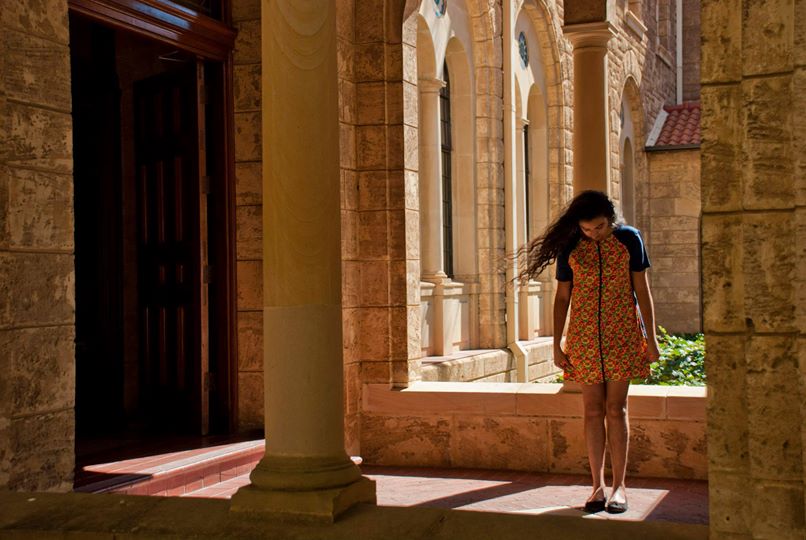by Lakhpreet Kaur
Why do Sikhs keep long, un-cut hair? Seriously, give me a good reason! What’s the point of my kesh? Kesh is considered to be an essential part of Sikhi. Yet, growing up, no one gave me a convincing answer as to why it is essential or why the Gurus commanded Sikhs to keep long hair. Throughout my life, I kept getting half-baked, unsubstantiated answers. So, back in 2013, I decided to go on a quest, compiling all the answers that I could find. This is what I found.
I did not give a “seal of approval” to any points or counter any reasoning. Each person’s connection to their kesh is personal and not for me to judge. I didn’t critique my findings, as I am not in a position to unearth the validity of each claim, but rather I present them to you as I discovered them. Maybe you’ll find one that clicks for you.
Below is a brief summary of the different reasons I could find that people give for why Sikhs keep uncut, long hair. Through this limited research, my personal reasons for keeping kesh have become clearer and more resolute. Different inspirations resonate with different people. Hopefully, this may help you find your motivations too. I hope you enjoy this catalogue and find something that works for you whether that’s reasoning, or faith, or just pure love for the Guru.
Reason 1: Because the Gurus Said So
– “When you have faith, you don’t need any absolute reason for doing anything. The Gurus said to keep long hair, so I do. I don’t question it,” someone once told me.
Reason 2: Because the Gurus had Long Hair
– According to Trilochan Singh in The Turban and Sword of the Sikhs, Sikhs live in the physical image of the Guru, and since the Gurus kept long hair, so do Sikhs. This may be as a tribute to the Gurus’ lives or as a way to live in line with the Gurus’ lifestyle.
Reason 3: A Connection to Guru Sahib
– Long hair can help a Sikh feel connected to the Guru. It is a physical commonality a Sikh shares with their Guru and thus, can serve as a reminder that a Sikh can be Guru-like and must strive to embody qualities the Gurus had.
– According to Gobind Singh Manasukhani in Sikh Rahat Maryada and Sikh Symbols long hair is regarded as the seal of the Guru. Typically, a seal authenticates a document or is placed on package holding valuables. In this light, kesh is the Guru’s seal authenticating the Sikh as their disciple. Long hair can be considered the emblem upon the valuable mind/soul contained within the body.
– Gobind Singh Manasukhani also believes that long hair symbolizes the spiritual link a Sikh has with the Guru’s power.
Reason 4: Orders
-Keeping kesh honors Guru Gobind Singh’s 1699 Vaisakhi Hukam (command/order) that amritdhari (initiated) Sikhs, must wear the Five Kakars, one of which is kesh. In June of 1699, after the first Sikh Vaisakhi, Guru Gobind Singh Ji issued a hukam nama specifically for the sangat of Kabul on Jeth 26, Sammat 1756 (Bikrami calendar). In this hukham, Guru Ji refers to kesh several times, “Keep your hair (kesh) uncut – this is the seal of the Guru….Look after your hair and comb (with a kanga) it twice a day….Never have any connection whatsoever with those who…celebrate the cutting of children’s hair.”
-Some point to the rehatnama (code of conduct) written by Bhai Daya Singh Ji, a contemporary of Guru Gobind Singh Ji, that states, “The hair resides on the body, forsake cutting it.”
-The Damdami Taksal Rehat Maryada also indicates the importance of kesh, “Unshorn hair from your head down to your toes. All hair is to be kept unshorn and your hair is to be tied and complemented with a turban.”
-Writer Sukhmandir Khalsa notes that almost all other rehatnamas lay special emphasis on the maintenance of unshorn hair.
Reason 5: Saintliness or Holiness
-In ancient South Asia, it was a general practice with Hindu sages and ascetics to keep long hair tied in a knot on top of their head and keep a long beard. Gurdev Singh hypothesizes in his paper, Perspectives on the Sikh Tradition, that Guru Gobind Singh wanted his Sikhs, despite being householders and soliders, to also be karma yogis, or practical saints. Kesh was a way to symbolize the balance of being both in the spiritual and temporal world.
-This is reiterated by Gobind Singh Manasukhani who states that even today in South Asia, kesh is a symbol of saintliness or holiness.
-Long hair, says writer G.S. Sidhu, serves as a reminder for Sikhs to behave like the saints and Rishis of the past.
-Author G. A. Gaskell writes, “Hair of the head is a symbol of faith, intuition of truth, or the highest qualities of the mind.”
Reason 6: Devotion & Love
– Another theory is that the head of a devout Sikh is an offering to the Guru and long hair is proof of the Sikh’s devotion and a sign of a Sikh’s commitment to their Guru.
– Others say that kesh indicates a life decided to the services of Wahgeuru and humanity.
– Some say that kesh is a mark of dedication to the Guru. Harnoor Singh, a Kaur Life writer, believes that kesh is grown and kept out of love for the Guru.
Reason 7: Truth
-Writer Sukhmandir Kaur Khalsa says that keeping kesh honors truth. Hair, like truth, continually asserts itself despite whatever measures are taken to deny it. Whether plucked, shaved, or curled, or colored, the hereditary disposition and condition of hair cannot be changed or concealed, for hair always returns to its original genetic growth pattern. Therefor keeping hair is a way to honor truth.
Reason 8: BecomingWhole
– According to author Pamela Margaret Wylam, another reason a Sikh may keep long hair is to establish a complete and natural person. When the body is whole, it represents a whole spirit, a spirit unlimited by worldly consideration.
Reason 9: Sikh Sovereignty
– Some Sikhs strive not to conform to time-bound, secular trends or socially constructed, ever-shifting gender image expectations; some Sikhs seek to be unattached to arbitrary standards. Thus, Wylam says, long hair indicates a freedom from socially deemed fashionable haircuts. The Sikh is sovereign from social standards of beauty and gender, and only behaves in accordance with the Gurus’ standards.
Reason 10: Discipline
– Personal discipline is central to Sikhi and Gurdev Singh believes that keeping long hair, combing it every day and washing it, develops discipline.
Reason 11: Reducing Vanity
– Some Sikhs feel that keeping kesh reduces vanity. Keeping hair intact is a constant reminder to make conscious choices when facing the challenges or confronting the ego.
Reason 12: Self-esteem
– Keeping kesh builds self-esteem, in another point of view. Keeping hair intact allows one to experience courage, conquer fear, and realize unconditional love.
Reason 13: Eliminates Duality
– Perhaps keeping all of one’s kesh helps the Sikh eliminates the mental duality that may come with cutting hair; that Waheguru made the human perfect but somehow the Sikh is not perfect and thus must cut their hair. Bringing thoughts and actions in line with each other can help establish inner peace.
Reason 14: A Common Denominator
– Since every practicing Sikh keeps long hair, it is the common denominator between all Sikhs. It helps connect everyone mentally, reminding Sikhs that we are all striving to reach the same religious, spiritual, social objective, together. Long hair across the panth psychologically connects Sikhs to their fellow Sikhs.
Reason 15: Collective Consciousness
In his paper A Brief Introduction to Sikhism, G.S. Sidhu writes that long hair across the panth builds collective consciousness among Sikhs; it is a mark of dedication and group consciousness.
A Sikh collective consciousness is a set of shared beliefs, values, history, ideas, and moral attitudes which serves as a unifying force within the panth. It plays a role in uniting Sikhs to achieve communal goals and overcome obstacles. “The totality of beliefs and sentiments common to the average members of a society forms a determinate system with a life of its own. It can be termed the collective or creative consciousness,” write sociologist Emile Durkheim.
An individual Sikh’s consciousness has elements that are common to all other Sikhs within the panth (across time and geography), creating solidarity through mutual likeness. Such solidarity facilitates the advancement of Sikh interests, objectives, and standards within the panth and also, beyond it.
Furthermore, according to Mary Kelsey’s theory (sociology lecturer at UC Berkeley), collective consciousness can bring Sikhs together as a dynamic group to share resources and knowledge.
Lastly, collective consciousness, in the Sikh context, can endow the Sikh panth with unique agency: it contributes to an individual Sikh to think and act in a way that reflects the panthic values. This often promotes positive behavior and deters negative behavior. For example, Sikhs who are highly visible (with a beard, long hair, and/or turban) may think twice about committing unethical acts, for instance, since it reflects poorly on all other Sikhs. As Tom Burns and Erik Egdahl state in The Social Construction of Consciousness, those in collective consciousness, “can be considered to possess agential capabilities: to think, judge, decide, act, reform; to conceptualize self and others as well as self’s actions and interactions; and to reflect.”
Reason 16: Kinship
– Long hair forges an association of the Guru’s disciplines as equals, says Gurdev Singh in Perspectives on the Sikh Tradition, decided to the services of Wahgeuru and humanity.
Reason 17: Kesh Psychologically Connects Sikhs to their History
– Tirlochan Singh asserts that long hair is a way of keeping Sikhs bound to their past. As Sikhs in the past kept long hair, keeping long hair in the modern era can help connect contemporary Sikhs with historical Sikhs, keeping history alive and giving Sikhs strength.
Reason 18: It’s a Gift from Waheguru
– Some Sikhs believe that hair is provided by Waheguru, with its peculiar distribution over the body, and it should be respected as is.
– For some, hair is the symbol of love and respect for Waheguru.
Reason 19: Waheuguru Made Us This Way
– Another reason some Sikhs keep long hair is to live in harmony with the hukham (will/order) of Waheguru.
– Kesh indicates a Sikhs acceptance of Waheguru’s will says G.S. Sidhu.
– Sukhmandir Khalsa says that keeping kesh intact honors the Creator’s intention. Hair is a birthright inherent in the Creator’s design.
– Others say that kesh is just like any other part of the body and as one would not cut or mutate an arm, for instance, one should not do that to kesh either.
Reason 20: Sikh Identity
– The Sikh Coalition asserts that kesh is a part of the daily uniform of a Sikh; kesh forms an external identity for a Sikh.
– Keeping kesh identifies one as a Sikh, says Sukhmandir Khalsa. Hair is a visible identifier, which distinguishes the Sikh from all other religions and walks of life. Keeping hair intact encourages and gives support to fellow Sikhs.
Reason 21: Fierce Image
– Gurdev Singh proposes the idea that keeping long hair was to create a fierce and bold, warrior appearance for the Khalsa. The warrior tribes of the historic North West Afghan frontier kept long hair, though trimmed, and perhaps the Gurus wished the Sikhs to have a similarly impressive and alarming appearance, thus informing his decision to mandate the keeping of kesh.
Reason 22: Inexpensive
– Kesh contributes to the Sikh’s uniform and it is an inexpensive, impressive, permanent uniform accessible to all says Gurdev Singh. Regardless of how poor you are, because kesh costs no money, you can have at least this one article of faith connecting the Sikh to the Khalsa.
– Adding to this idea, Gobind Singh Manasukhani writes that kesh is a natural uniform.
Reason 23: Long Hair as the Antithesis of Renunciation
– Some religious people practice tonsure, or shaving their heads to proclaim detachment from the world. Tonsure is still a practiced in some Catholicism orders. It is also used in the Eastern Orthodox Church for newly baptized members and is frequently used for Buddhist novices and monks. The complete shaving of one’s head bald or just shortening the hair, exists as a traditional practice in Islam after completion of the Hajj and is also practiced by a number of Hindu religious orders.
– Sikhs, according to author J.P.S. Uberoi, keep hair to take a stand against this practice: to renounce renunciation, to indicate that they can be part of this world, and still pursue spiritual goals. This Sikh practice fused together the householder/common citizen with the renouncer/spiritual ascetic.
CONCLUSION
There you have it. 23 reasons people have proposed as to why Sikhs keep kesh. I hope you find one that resonates with you.
Anything I missed? Fill me in!
Also, I would love to hear your opinion as to why you, personally, keep kesh.
Sources
- Burns, T.R. Engdahl, E. (1998.) The Social Construction of Consciousness. Part 1: Collective Consciousness and its Socio-Cultural Foundations, Journal of Consciousness Studies, 5 (1) p 72.
- DDT: Damdami Taksaal. Rehat Maryada. http://damdamitaksaal.org/index.php?option=com_content&do_pdf=1&id=80&limitstart=14
- Durkheim, Emile, (1893.) The Division of Labor in Society. Translated by George Simpson. New York: The Free Press.
- Singh, Guru Gobind (1699). Hukham Nama of Kabul. Available: http://www.sikhsangat.com/index.php?/topic/5216-guru-gobind-singh-jis-kabul-hukamnama/
- Gobind Singh Manasukhani, (1988.) Sikh Rahat Maryada and Sikh Symbols. In Advanced Studies in Sikhism. Papers Contributed at Conference of Sikh Studies Los Angeles. December 1988. Editors Jasbir Singh Mann &Harbans Singh Saron. http://www.globalsikhstudies.net/pdf/Advance_Studies.pdf
- Khalsa, Gurmustuk Singh. (2009.) The Value of Your Hair. http://www.sikhnet.com/news/value-your-hair
- Khalsa, Gurmustuk Singh 2. (2011). All About Hair. http://www.mrsikhnet.com/2011/09/09/all-about-hair/
- Sidhu, G.S. A Brief Introduction to Sikhism.http://www.globalsikhstudies.net/pdf/gss_briefintro.pdf
- Sikh Coalition. FAQs. http://www.sikhcoalition.org/resources/about-sikhs/faq
- Singh, Gurdev, (1996.) Respectives on the Sikh Tradition. Academy of Sikh Religion & Culture, Patiala. http://www.globalsikhstudies.net/pdf/Prespective_on_Sikh_tradition.pdf
- Singh, Nihang. Akaali Code of Conduct: Bhai Daya Singh Ji Rehatnama. Posted March 6, 2011. http://www.nihangsingh.org/blog/?p=256
- Singh, Trilochan. (1997). The Turban and Sword of the Sikhs. Sikh Missionary Society UK.
- Sukhmandiar Khalsa. (2013). Top Ten Reasons To Keep Your Kes. http://sikhism.about.com/od/sikhism101/qt/Top-Ten-Reasons-To-Keep-Your-Kes.htm
- Wylam, Margaret Pamela. (1963). An Introduction to Sikh belief. Sikh Missionary Society of Great Britain.
- Uberoi, J. P. S. The Five Symbols of Sikhism, in Fauja Singh et al, Sikhism/ Patiala, Punjab: Punjabi University, 1969.





9 Comments
Satveer S Randhawa
04/30/2021 at 4:41 pmLove this post.
QQ – what about nails then?
Wilfred Rachan
11/28/2021 at 1:12 amYour Reason #1. Guru said so?
What is meant by this – Guru’s key message was “use your Brain (THINK).
3 principle of sikhs – Work (Economics), Share (Service) , THINK (analyse & discuss)
Unless we are reading different bani – I am surprise by what you wrote?
Manipal Singh
12/04/2021 at 11:18 amDear Satveer,
Bhenji excellently compiled living parts of our body. While combing hair, dead hair are removed, similarly we only cut part of the nails which is dead and untidy.
Rupinderjeet Kaur
02/23/2022 at 8:45 amExcellent points compiled nicely – thank you
Anonymous
10/13/2022 at 5:06 amThis long hair has nothing to do with sikhi/sikh religion. Long hair was something the Yogis kept and belief. Sikhism has nothing to do with the Yogi’s.
Davinder Singh
11/13/2022 at 5:35 amTheir is lot of scientific reason for maintaing all body hairs intact.
Just like plants communicating through leaves a Sikh is ordained to reach the level of communication with lord through each and every strand of hair
Rajinder Singh
03/04/2023 at 3:38 amThe hair , on our body, wherever it is, long or short, is the design of the nature.
It has nothing to do with any religion or spirituality
Cutting of hair means damaging your body.
When we cut our hair, our body turns into a healing mode. The hair starts growing to achieve its desired length according to different bodies. People who cut their hair are actually growing their hair continuously till they die. When you do not cut your hair, it will stop growing after achieving its desired length. It does not grow continuously. And when it grows it also absorbs nutrients from your body.
The hair on your body which has been cut, grows at the speed of six inches in a year.
So the person who has been cutting his hairs for forty years. Has actually grown 240 inches long hair during his lifetime.
From birth, my hair grew to the length of two feet, till the age of eight. And then it stopped growing.
My age is now fifty two and the length of my hair on my head is still two feet long.
Never cut it.
Rajinder Singh
07/13/2023 at 6:02 amThe hair, on our body, wherever it is, long or short, is the design of the nature.
It has nothing to do with any religion or spirituality
Cutting of hair means damaging your body.
When we cut our hair, our body turns into a healing mode. The hair starts growing to achieve its desired length according to different bodies. People who cut their hair, regularly, are actually growing their hair continuously till they die. When you do not cut your hair, it will stop growing after achieving its desired length. It does not grow continuously.
The hair on your body which has been cut, grows at the speed of six inches in a year.
So, the person who has been cutting his hairs for forty years. Has actually grown 240 inches (12 feet) long hair during his lifetime.
And during this process of growing back of hair, many essential nutrients are absorbed by the body to grow the hair back to its original length.
Our Gurus did not want their Sikhs to grow hair continuously in their complete life.
From birth, my hair grew to the length of two feet, till the age of eight. And then it stopped growing.
My age is now fifty-two and the length of my hair on my head is still two feet long.
Never cut it.
Vikram
04/15/2024 at 6:44 pmAnyone who says Keeping hair is a gift from nature, so does having nails is a gift from nature. Refrain from Cutting the nails as well. Is cutting nails damaging the body? This argument of “If it is natural, it is good” is a lazy argument. Fun Fact- Cyanide, most poisonous element in the nature, is a natural occuring Compound.
I can go on with this list that occurs naturally and is harmful to humans.
Cysts, Autoimmune Diseases, Genetic heart Disorders, Cancer. Everything is a natural occuring phenomena. If Cutting extensions of your body that will regrow again is “damaging one’s body”, by that logic, refrain from surguries. I would even recommend, stop going out, and playing as you will somehow get a scar or bruise which can “damage your body” as the natural gifts from GOD should be preserved.